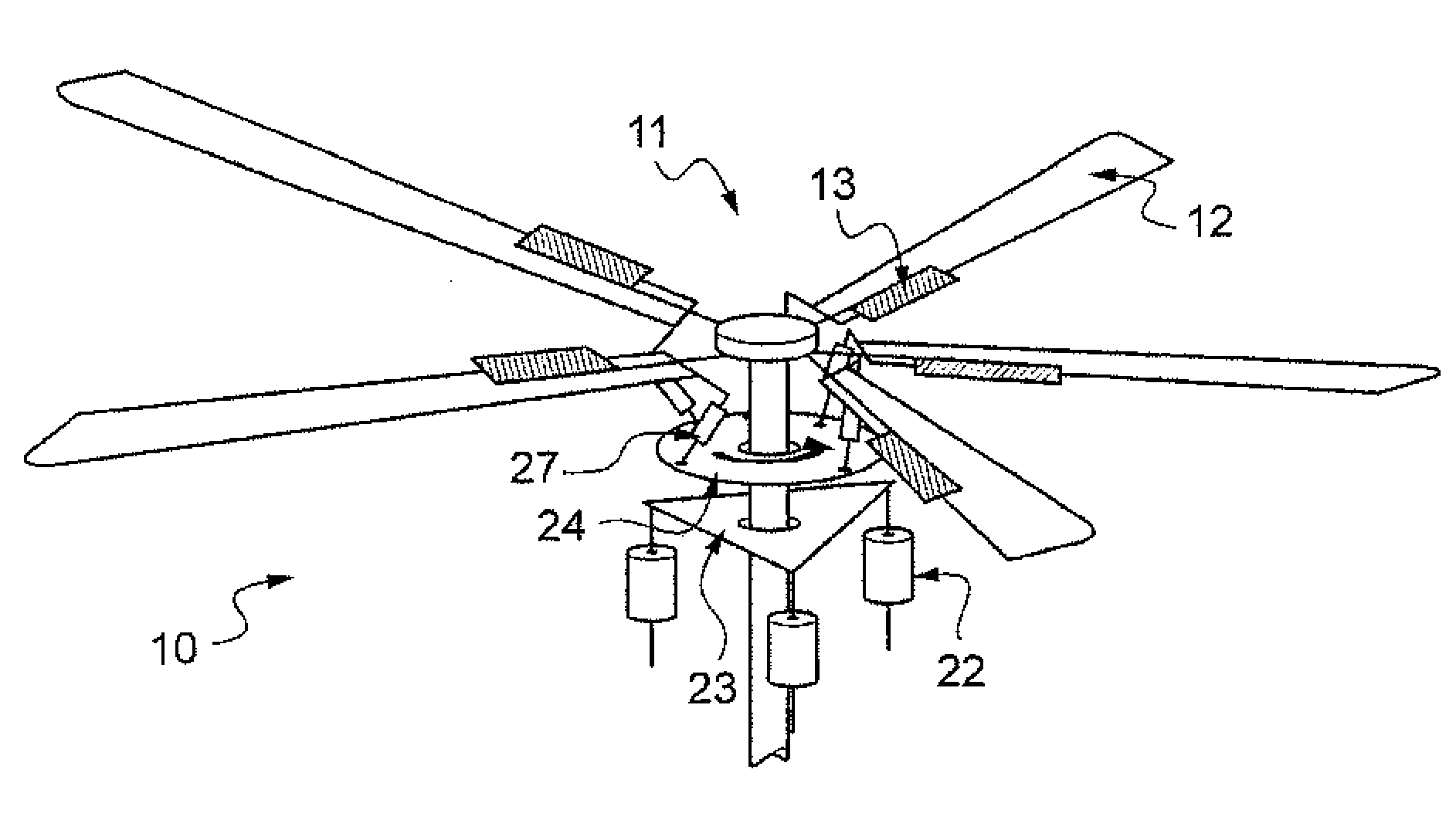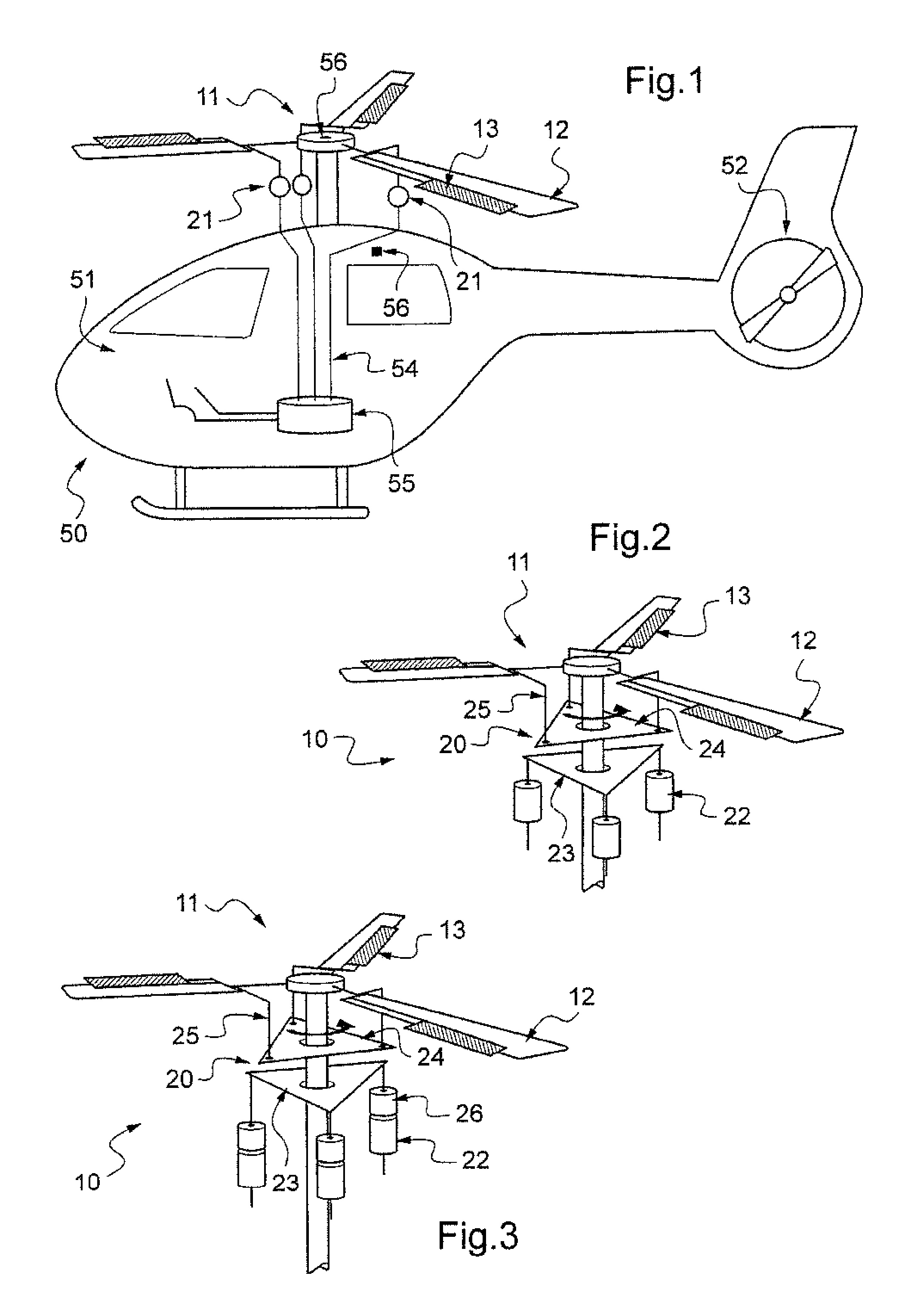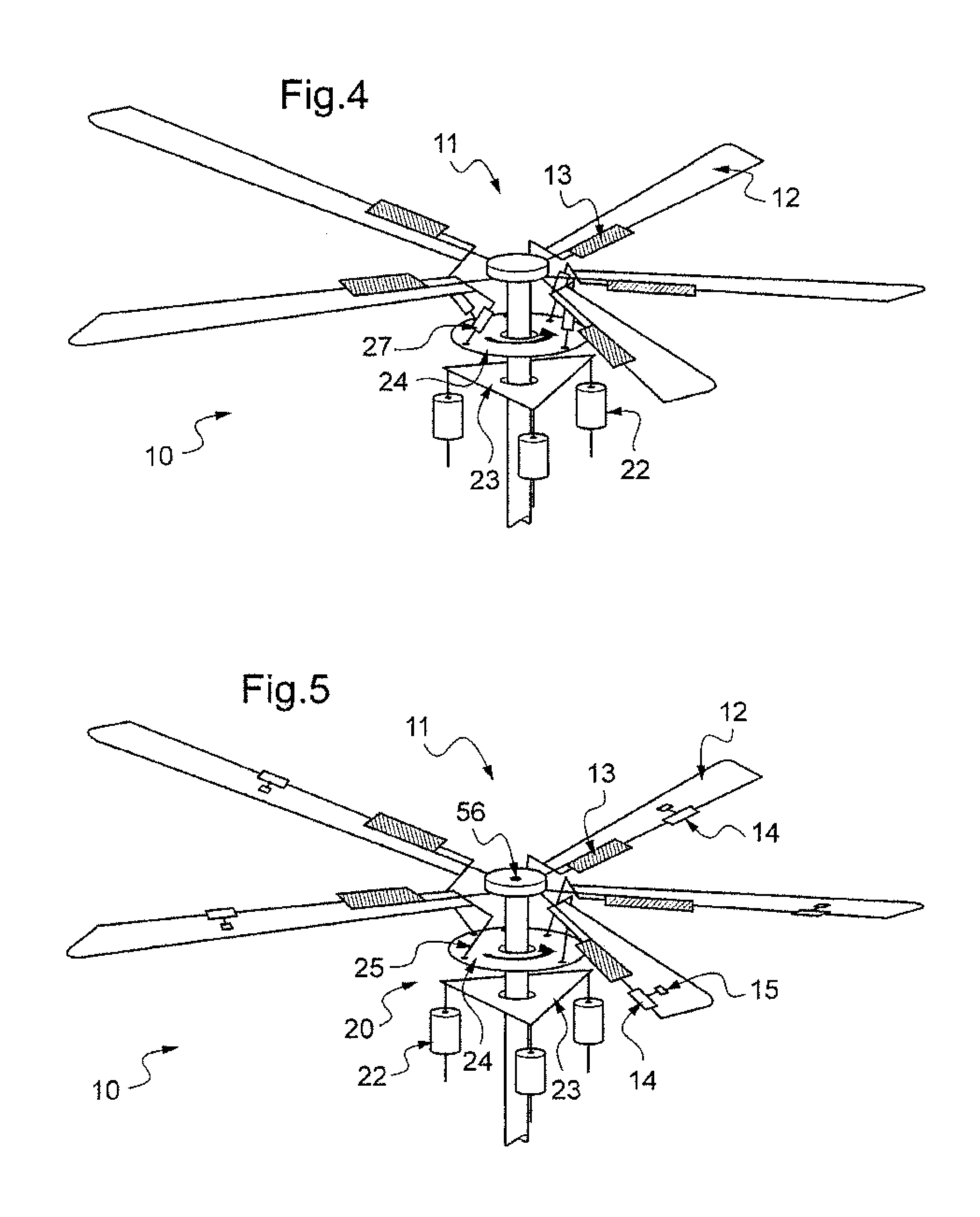Device for varying blade pitch of a lift rotor
a technology of lift rotor and blade pitch, which is applied in the direction of propellers, propulsive elements, water-acting propulsive elements, etc., can solve the problems of large noise and vibration of rotary wing aircraft in flight, source of noise and vibration, and high levels of vibration generated by the main rotor, so as to optimize increase the performance of the aircraft, and avoid use or even penalization
- Summary
- Abstract
- Description
- Claims
- Application Information
AI Technical Summary
Benefits of technology
Problems solved by technology
Method used
Image
Examples
first embodiment
[0135]In a first embodiment shown in FIG. 2, the device 10 for varying blade pitch comprises a swashplate 20 having a non-rotating plate 23 and a rotating plate 24 that rotates with the main rotor 11. The rotating plate 24 acts via a mechanical connection 25 to drive the angle of inclination of each main flap 13 and consequently to vary the pitch of each blade 12. The main actuators 21 are electric actuators 22 located in a stationary frame of reference. These electric actuators 22 serve to move and vary the angle of inclination of the non-rotary plate 23, thereby controlling the main flaps 13 and consequently each corresponding blade 12, at least cyclically.
[0136]The movement of the non-rotary blade 23 gives rise to movement of the rotary plate 24 that acts via the mechanical connection 25 to cause each main flap 13 to vary its angle of inclination in identical manner, thereby varying the pitch of each blade 12. This performs collective variation of the pitch of the blades 12.
[0137...
second embodiment
[0138]In the invention specific to rotary wing aircraft 50 in which the main rotor 11 has three or four blades 12, the electric actuators 22 located in the stationary frame of reference have an operating frequency that enables the main flaps 13, and consequently the pitch of the blades 12, to be operated cyclically and multi-cyclically.
[0139]It should be observed that it is known that the noise and vibration generated in particular by the main rotor 11 can be attenuated by modifying the pitch of the blades 12 several times in a single revolution of the main rotor 11, with the pitch of the blades then being said to be controlled multi-cyclically.
[0140]Tests have also confirmed that these variations in blade pitch need to be performed at particular frequencies equivalent to 2ω, where ω corresponds to the speed of rotation of the main rotor 11, and also at (b−1)ω, bω, and (b+1)ω, where b corresponds to the number of blades 12 in the main rotor 11.
[0141]Thus, for the general case of a m...
PUM
 Login to View More
Login to View More Abstract
Description
Claims
Application Information
 Login to View More
Login to View More - R&D
- Intellectual Property
- Life Sciences
- Materials
- Tech Scout
- Unparalleled Data Quality
- Higher Quality Content
- 60% Fewer Hallucinations
Browse by: Latest US Patents, China's latest patents, Technical Efficacy Thesaurus, Application Domain, Technology Topic, Popular Technical Reports.
© 2025 PatSnap. All rights reserved.Legal|Privacy policy|Modern Slavery Act Transparency Statement|Sitemap|About US| Contact US: help@patsnap.com



